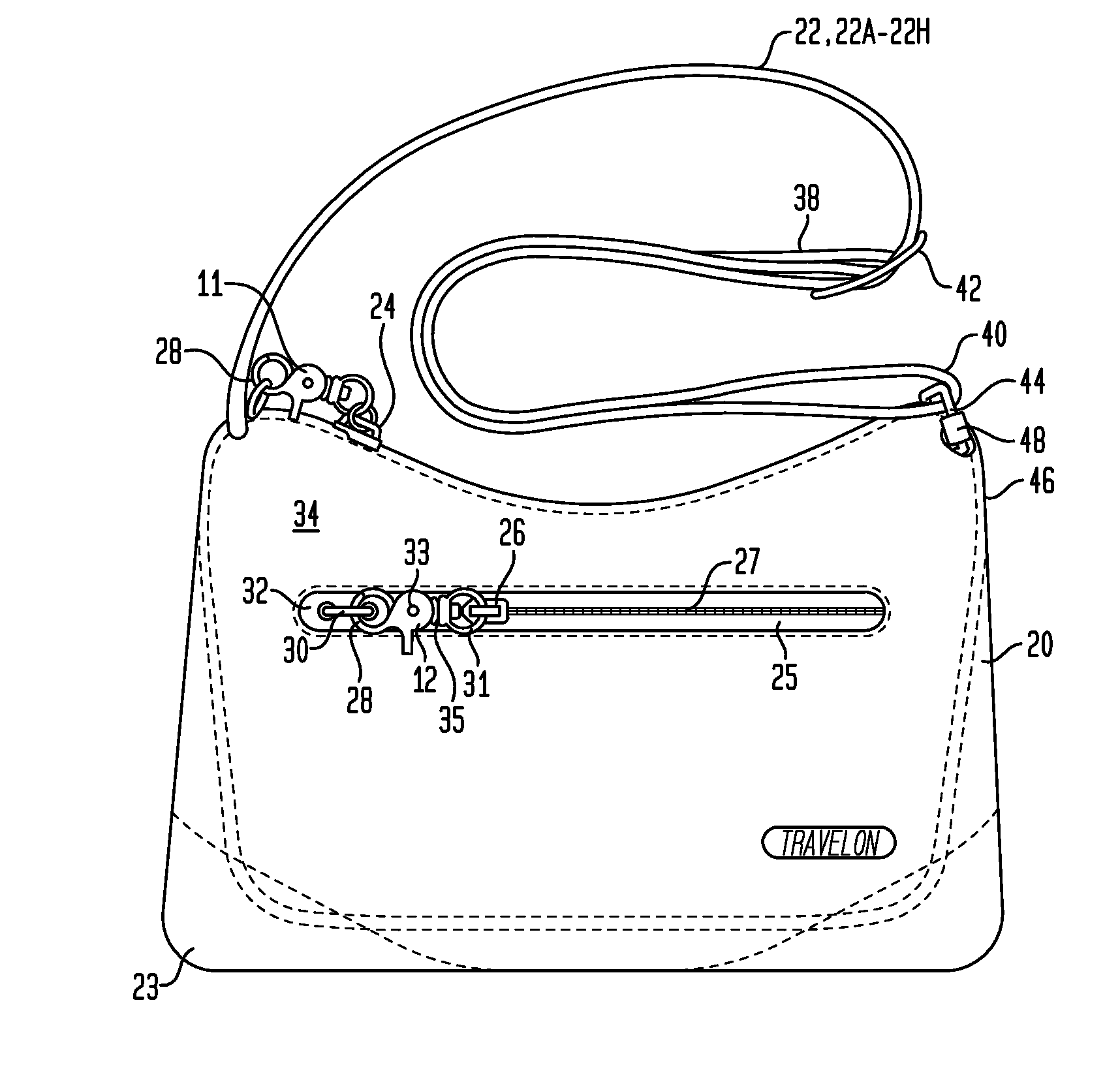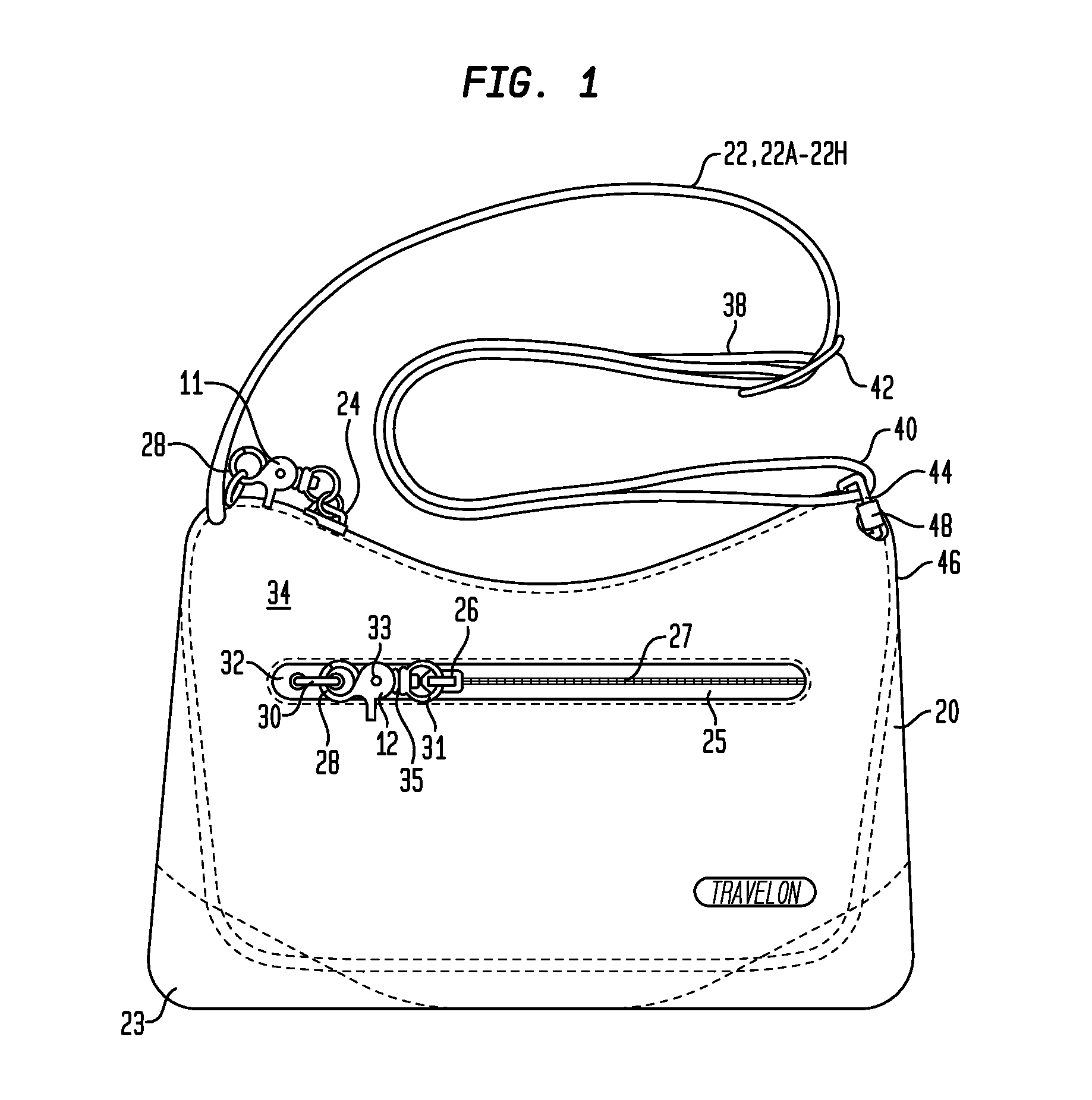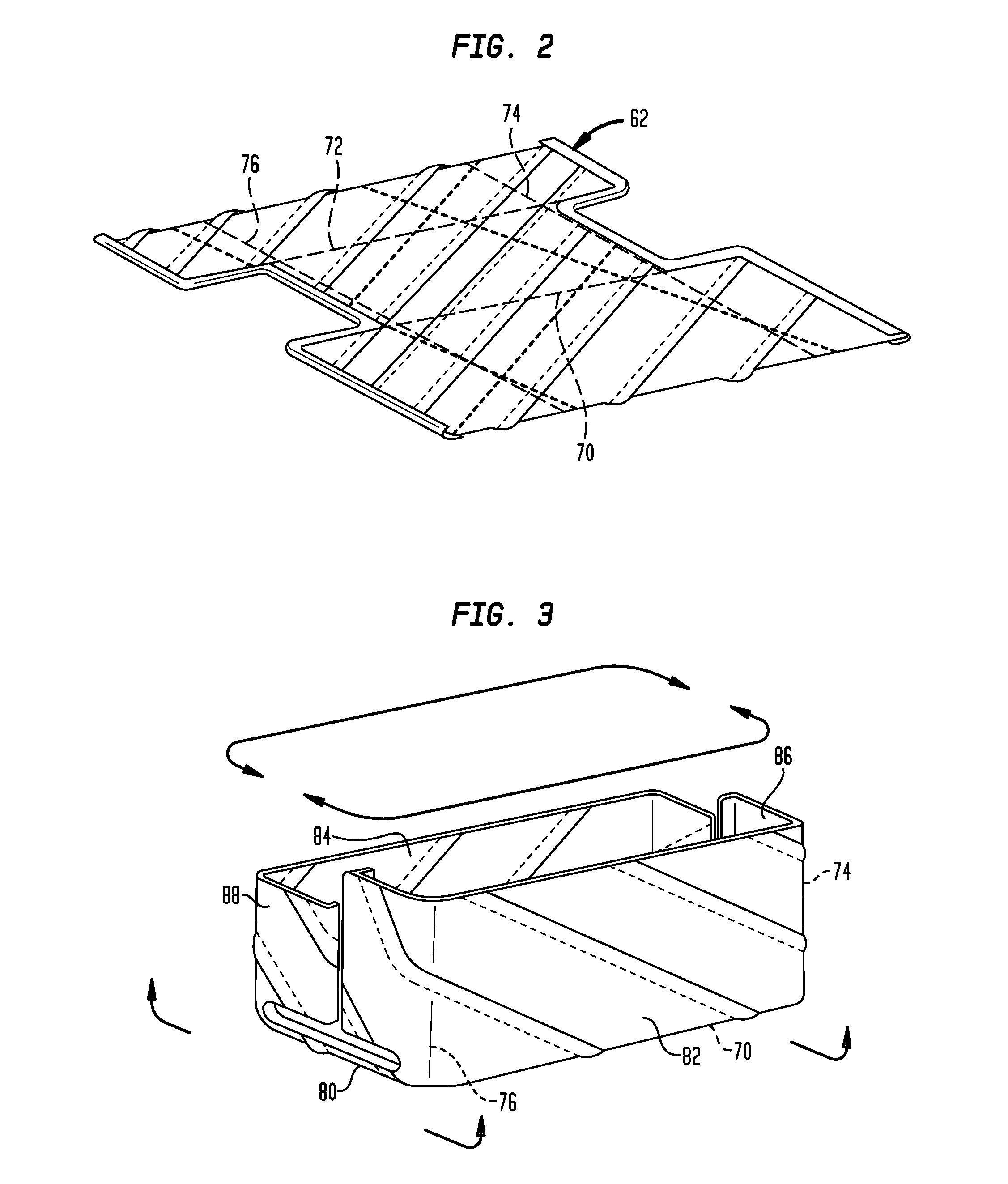Anti-Theft Security Panel For A Carrying Bag
- Summary
- Abstract
- Description
- Claims
- Application Information
AI Technical Summary
Benefits of technology
Problems solved by technology
Method used
Image
Examples
second embodiment
[0155]Not separately illustrated in FIGS. 1 and 19, those having skill in the art will recognize that the orientation of the clasp or fastener 11, 12 may also be reversed, namely, the clasp or fastener 11, 12 may be coupled to the exterior bag 23 and is releasably couplable to the zipper 24, 26, respectively. For example, loop 31 may be coupled or attached to the loop 30 which is attached to the outer layer 34 forming the exterior bag 23. The catch 28 may then be manually and releasably coupled to the zipper 24, 26, such as via a corresponding opening or hole in the zipper pull, instead of the illustrated loop 31, and again, a manual release operation of a clasp or fastener 11, 12 is required in order to enable operation of zippers 24, 26 to achieve access though zippered openings to the interior of the bag 20. such a second or secondary fastener 11A is illustrated and discussed below with reference to FIGS. 38, 38A and 38B.
[0156]Other types of secondary fasteners, in addition to cl...
first embodiment
[0167]FIG. 4A is cross-sectional view (through the A-A′ plane illustrated in FIG. 4) of a representative first embodiment of a carry strap 22, such as illustrated in FIGS. 1 and 4. As illustrated in FIGS. 1, 4 and 4A, a carry strap 22 generally comprises a first piece of flexible material (or webbing) 51, with a wire or cable 38 disposed longitudinally along the middle or center of the flexible material (or webbing) 51, illustrated as central region 562 located between first and second lateral regions 563, 564. The wire or cable 38 and central region 562 of the first flexible material are covered by a second piece of flexible material (or webbing) 49, also disposed longitudinally along the middle or center of the flexible material (or webbing) 51, and secured to the first piece of flexible material (or webbing) 51, such as through stitching 53, securing the wire or cable 38 in between the second flexible material 49 and the central region 562 of the first flexible material 51. As il...
fifth embodiment
[0185]FIG. 54 is an isometric view of a representative fifth embodiment of a carry strap 22D. As illustrated in FIG. 54, a single piece of webbing 561 is thicker in the middle (or central) region 562, allowing the first and second side or lateral regions 563, 564 to be wrapped around respective cables 38A, 38B and secured in place, as mentioned above, to form a carry strap 22D having a substantially even overall thickness and also generally a substantially thin form factor. Depending upon the comparative thickness of the middle (or central) region 562, as compared to the first and second side or lateral regions 563, 564, depending on the width of the first and second side or lateral regions 563, 564, and depending on the location of the placement of the wires or cables 38 along or within the first and second side or lateral regions 563, 564, various different configurations or arrangements of a carry strap 22D may result, as illustrated in FIGS. 55-57 and 61.
[0186]FIG. 55 is cross-s...
PUM
| Property | Measurement | Unit |
|---|---|---|
| Diameter | aaaaa | aaaaa |
| Length | aaaaa | aaaaa |
| Electrical resistance | aaaaa | aaaaa |
Abstract
Description
Claims
Application Information
 Login to View More
Login to View More - R&D
- Intellectual Property
- Life Sciences
- Materials
- Tech Scout
- Unparalleled Data Quality
- Higher Quality Content
- 60% Fewer Hallucinations
Browse by: Latest US Patents, China's latest patents, Technical Efficacy Thesaurus, Application Domain, Technology Topic, Popular Technical Reports.
© 2025 PatSnap. All rights reserved.Legal|Privacy policy|Modern Slavery Act Transparency Statement|Sitemap|About US| Contact US: help@patsnap.com



